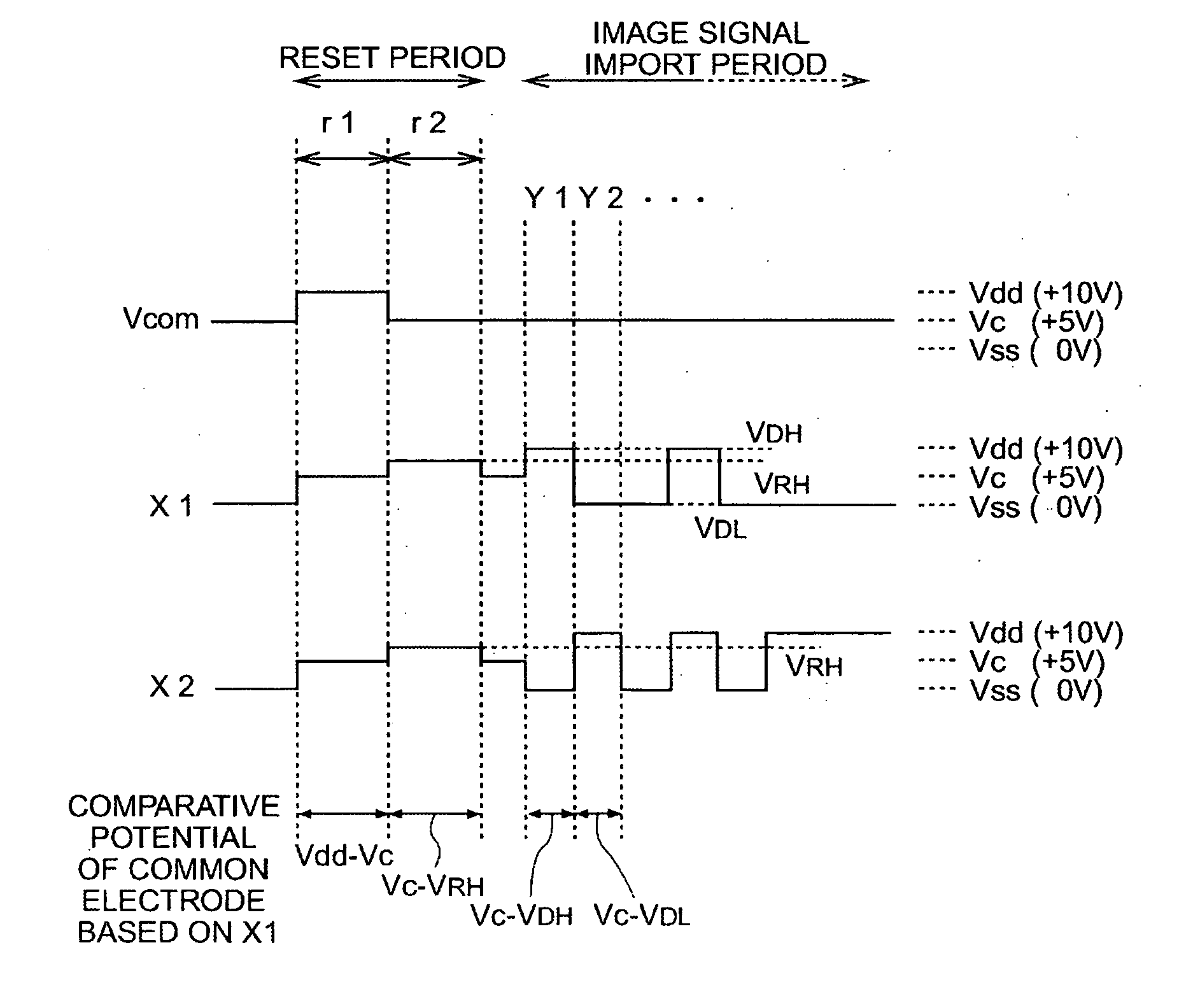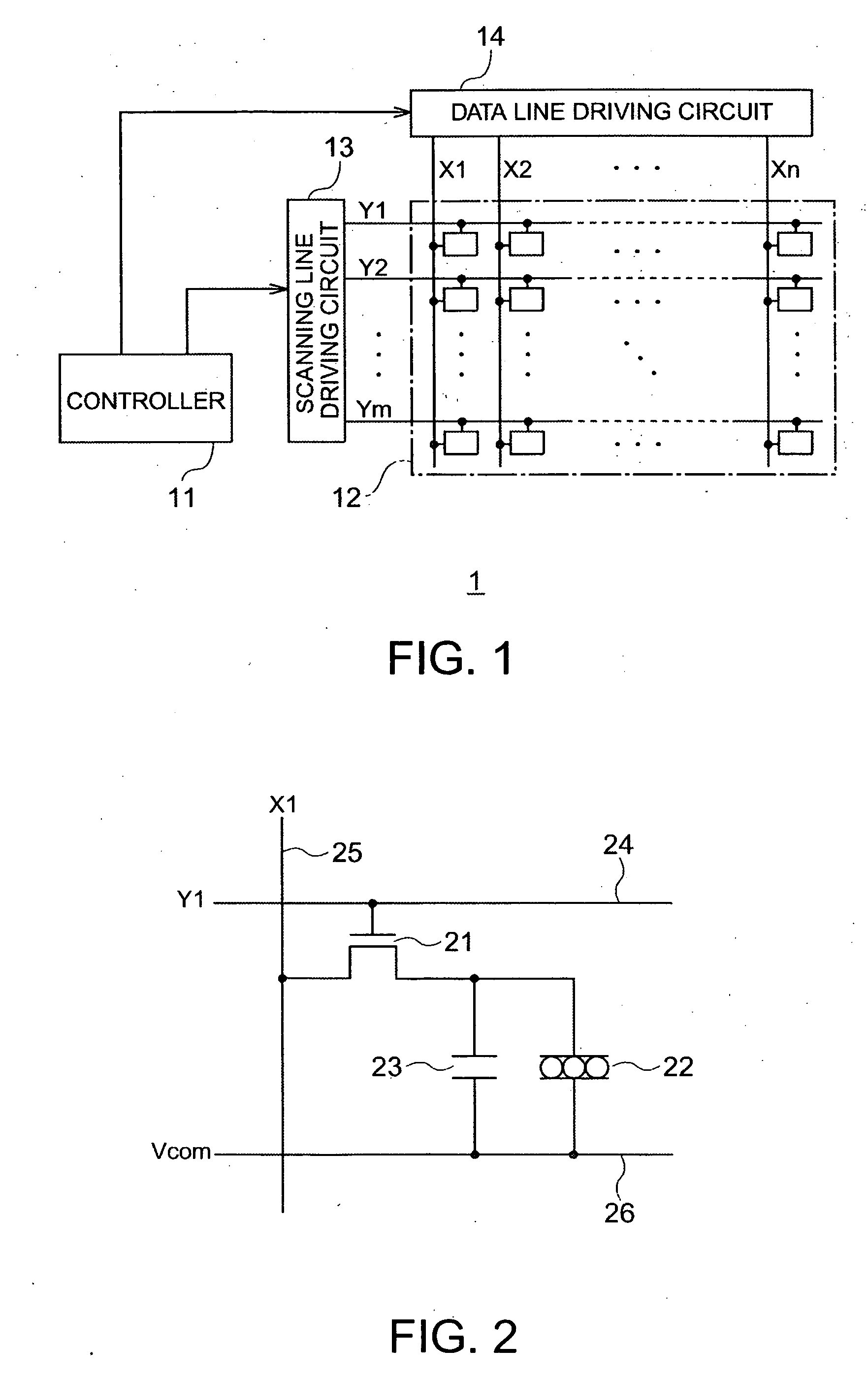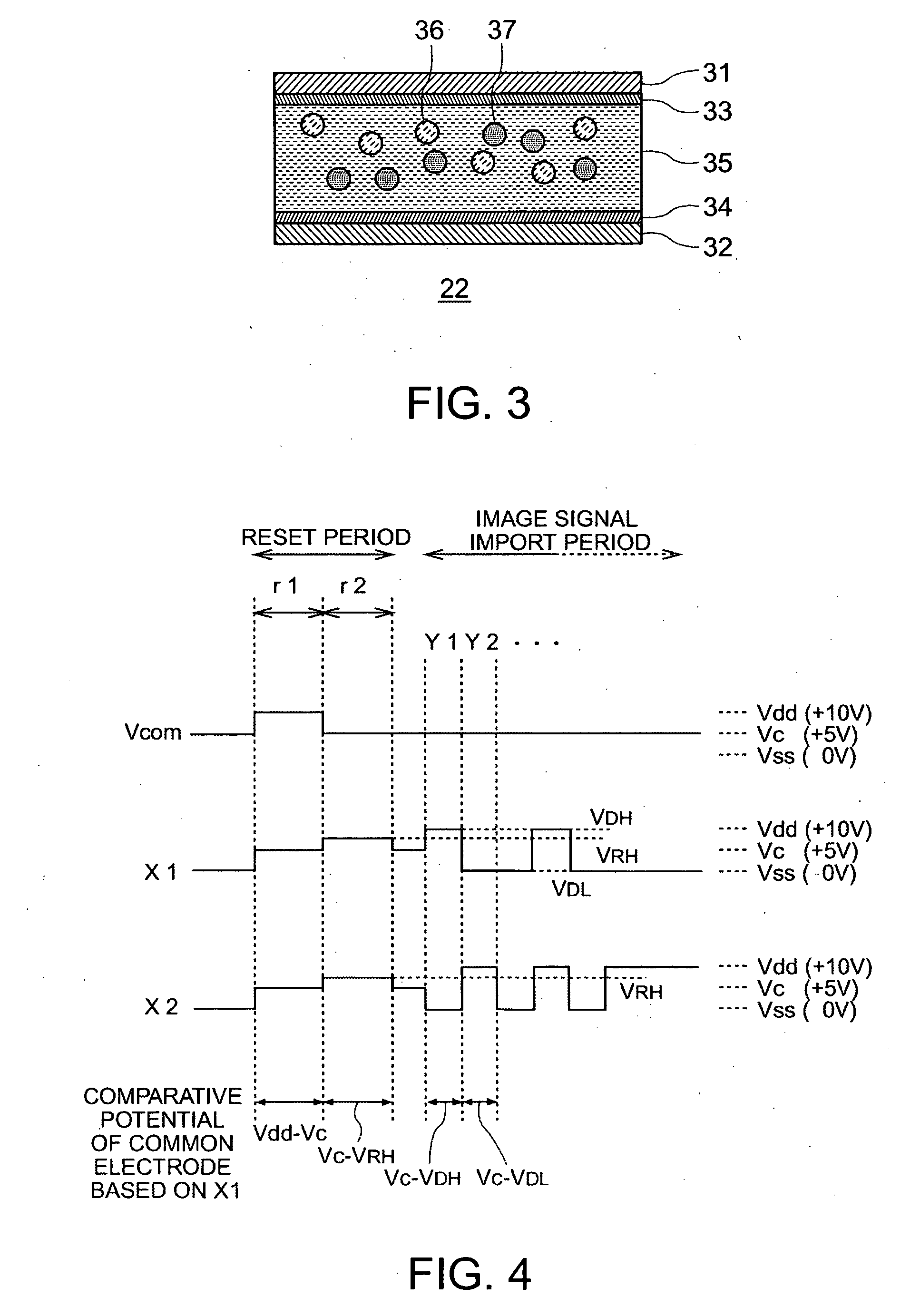Electrophoretic device, electronic apparatus, and method for driving the electrophoretic device
a technology of electrophoretic devices and electrophoretic particles, applied in the direction of static indicating devices, instruments, etc., can solve the problems of insufficient subsequent display of black, insufficient electrophoretic particles moving, and many room for improvement, so as to improve the image quality of electrophoretic devices, improve the effect of brightness and mobility
- Summary
- Abstract
- Description
- Claims
- Application Information
AI Technical Summary
Benefits of technology
Problems solved by technology
Method used
Image
Examples
Embodiment Construction
[0082] Embodiments of the invention will now be described with references to the accompanying drawings.
[0083]FIG. 1 is a block diagram schematically describing circuitry composition of an electrophoretic display device in an embodiment of the present invention. An electrophoretic display device 1 according to the embodiments as shown in FIG. 1 is composed including a controller 11, a display unit 12, a scanning line driving circuit 13, and a data line driving circuit 14.
[0084] The controller 11 controls the scanning line driving circuit 13 and the data line driving circuit 14, and is composed including an image signal processing circuit or a timing generator (not shown). The controller 11 generates an image signal (image data) that indicates an image which will be displayed in the display unit 12, a reset data for conducting a reset at the time of image re-write, and various other signals (clock signal, etc.), and outputs them to the scanning line driving circuit 13 or the data li...
PUM
 Login to View More
Login to View More Abstract
Description
Claims
Application Information
 Login to View More
Login to View More - R&D
- Intellectual Property
- Life Sciences
- Materials
- Tech Scout
- Unparalleled Data Quality
- Higher Quality Content
- 60% Fewer Hallucinations
Browse by: Latest US Patents, China's latest patents, Technical Efficacy Thesaurus, Application Domain, Technology Topic, Popular Technical Reports.
© 2025 PatSnap. All rights reserved.Legal|Privacy policy|Modern Slavery Act Transparency Statement|Sitemap|About US| Contact US: help@patsnap.com



